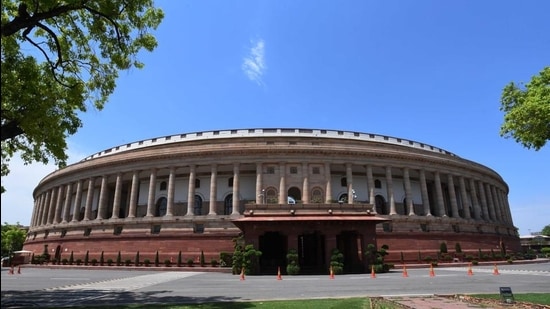Making parliamentary proceedings more transparent
If Parliament has to truly function as an “institution of accountability”, the General Purposes Committee, which oversees matters concerning the working of the House, must reform the telecast guidelines. It must also mull over the larger question of how accurate parliamentary records should be.
The first half of the Budget session of Parliament saw Rajya Sabha chairman Venkaiah Naidu reprimanding Members of Parliament (MPs) for using mobiles to record the proceedings. Such recordings had become a point of contention when the three controversial farm bills were passed amid bedlam in the Upper House. Each side blamed the other for the ruckus. To support their allegations, the government relied on the official Rajya Sabha TV (RSTV) feed, while the Opposition MPs produced mobile recordings. With only a limited number of journalists present in the gallery, it became even more difficult to ascertain the events.

The electorate has the right to know what is happening in the Houses. But there exists no revelatory telecast of RSTV that can impartially establish what transpired in the House. Its footage available in the public domain is muted for over 12 minutes with the camera focused mostly on the Chair of the House. There’s no way of knowing what’s being said or done in Parliament. While contradictory mobile recordings exist, only the edited RSTV feed of the day will be considered authoritative. This is because RSTV has a monopoly over recording and streaming the proceedings. The same holds true for Lok Sabha TV too. This allows for our parliamentary telecast to not just be sanitised, but often, orchestrated to the advantage of those who control the Houses.
The guidelines for telecasting proceedings, framed in 2010, prescribe censorship. They direct how the telecast will be moderated during “disorders”. On the one hand, they dictate that the telecast must be a true reflection of what is happening in the House, including scenes such as walkouts. On the other, they stipulate that during some disorders, including MPs entering the Well of the House, the camera shall focus only on the Chair of the House. The Chair has also been given the discretion to stop the telecast. There is no standard to determine which type of disorder should be telecast, covered up with visuals of the Speaker/Chair, or blacked out altogether. This enables both the government and the Opposition to peddle their version of the events, leaving viewers clueless.
The earlier telecast guidelines, created under the aegis of former Speaker Somnath Chatterjee in 2005, in fact, allowed the airing of disruptions. Telecasting disruptions, he felt, would promote transparency and have “a sobering effect” on MPs by shaming them into behaving responsibly. However, within five years, these progressive guidelines were revised to their current, diluted form under the speakership of Meira Kumar. The reason for this change was never made public but a plausible explanation could be drawn from the Lok Sabha’s performance. The live telecast of parliamentary proceedings began in 1994. Till the 12th Lok Sabha (1998-1999), the productivity levels, in terms of there being fewer disruptions, exceeded 100%. The 13th, 14th, and 15th Lok Sabhas (1999-2014) witnessed overwhelming disruptions as they were formed by stitching together a fragile coalition. Disruptions became the most effective means for MPs to voice diverse, regional interests and get noticed, something procedural constraints would otherwise not allow. It is, therefore, possible that the telecast guidelines were revised in order to curb the ruckus.
The United Progressive Alliance (UPA) government did get flak for this. The blackout during the 2014 Telangana Statehood Bill discussion led to vehement criticism for “subverting democracy”.
What happened in the Upper House during the passage of the farm bills is a manifestation of this abusive practice put in motion by the UPA government and being exploited by the current regime. Such censorship and State monopoly on parliamentary telecast violate the democratic ideals of accountability, transparency, and keeping the electorate informed. If Parliament has to truly function as an “institution of accountability”, the General Purposes Committee, which oversees matters concerning the working of the House, must reform the telecast guidelines. It must also mull over the larger question of how accurate parliamentary records should be.
Kinshu Dang is a media and policy researcher and Shreyas Narla is an independent legal researcher.
They are former legislative assistants to MPs of the 16th Lok Sabha
The views expressed are personal



